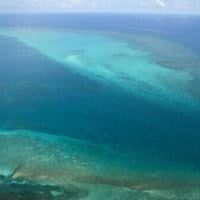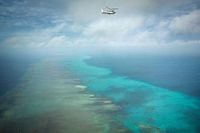On September 10, 2025, China’s State Council announced an ambitious plan to establish a national nature reserve at the hotly contested Scarborough Shoal—an atoll known in the Philippines as Bajo de Masinloc and in China as Huangyan Island. The move, covering roughly 3,523 hectares of coral reefs and lagoon, has ignited a fresh diplomatic firestorm, with the Philippines condemning it as a thinly veiled attempt to cement Beijing’s territorial claims in the South China Sea.
Just a day after China’s declaration, the Philippines lodged a formal diplomatic protest, denouncing the plan as "illegitimate and unlawful." According to the Philippine Department of Foreign Affairs, the creation of the nature reserve "clearly infringes upon the rights and interests of the Philippines in accordance with international law." The department’s statement urged China to "respect the sovereignty and jurisdiction of the Philippines over Bajo de Masinloc, refrain from enforcing and immediately withdraw its State Council issuance and comply with its obligations under international law."
Scarborough Shoal sits more than 200 kilometers from Luzon, the Philippines’ largest island, and has long been a traditional fishing ground for Filipino fishermen. Its strategic location near major shipping lanes leading to the Taiwan Straits and Bashi Channel only adds to its significance. Nearly 60 percent of global maritime trade passes through the South China Sea, making control over features like Scarborough Shoal a matter of international interest.
China’s State Council has framed the nature reserve as an "important guarantee for maintaining the diversity, stability and sustainability of the natural ecosystem of Huangyan Island." Chinese state media detailed that the reserve would include both "core" and "experimental" zones, effectively covering almost the entire shoal. Lin Jian, spokesperson for China’s Ministry of Foreign Affairs, insisted, "The establishment of a national-level nature reserve on Huangyan Island falls within China’s sovereignty." He further rebuffed Manila’s objections, stating, "China does not accept the Philippines’ unreasonable accusations and protests, and urges the Philippine side to cease its infringements and provocations."
But Philippine officials are far from convinced by Beijing’s environmental rationale. National Security Adviser Eduardo Año dismissed China’s plan as "patently illegal," arguing that it violates both the United Nations Convention on the Law of the Sea (UNCLOS) and a 2016 international arbitration ruling that invalidated Beijing’s sweeping historical claims to much of the South China Sea. "It is a clear pretext towards eventual occupation," Año said, adding that China’s proposal is "less about protecting the environment and more about justifying its control over a maritime feature that is part of the territory of the Philippines and its waters."
Jay Batongbacal, a maritime law expert at the University of the Philippines, echoed these concerns. He warned that the designation could pave the way for more aggressive tactics, including the potential arrest of Filipino fishermen. "China hopes that by clothing its actions as 'environmental protection' they will be able to dissuade countries from supporting Philippine activities and attempts to reintroduce traditional fishing on the shoal," Batongbacal told Reuters. He also pointed out that the area China is targeting for environmental restrictions—the northeast rim of the reef—is the very spot most commonly accessed by Filipino fishermen because it’s sheltered from currents and waves.
The Scarborough Shoal has been a flashpoint for maritime confrontations since 2012, when China seized control from the Philippines. Since then, the atoll has seen repeated standoffs, expulsions, and even collisions. In August 2025, a Chinese navy vessel collided with a Chinese coast guard ship while both were attempting to block a Philippine Coast Guard vessel near the shoal, according to the Associated Press. Manila released footage of the incident, which it described as part of a broader pattern of "dangerous maneuvers and obstruction" by Chinese forces.
China’s claim to the shoal is rooted in its so-called "nine-dash line," a sweeping demarcation that encompasses nearly the entire South China Sea and overlaps with the exclusive economic zones of the Philippines, Vietnam, Malaysia, Brunei, and Taiwan. Beijing insists that historical sovereignty and traditional fishing rights justify its control, despite a 2016 international tribunal ruling in The Hague that found "no legal basis" for China’s expansive claims and declared that its blockade of the shoal violated international law. China has rejected the ruling outright.
Meanwhile, the dispute has drawn in other powers. In August 2025, the United States deployed a guided missile destroyer and another combat ship near Scarborough Shoal as part of its "freedom-of-navigation operations," challenging China’s claims and sailing restrictions. The U.S. has no territorial claims in the area but has repeatedly stated that it is obligated to defend the Philippines, a longtime treaty ally, if Filipino forces come under armed attack in the South China Sea. Australia and Canada have also participated in joint drills with the Philippines near the shoal, underscoring the region’s growing international significance.
Environmental issues are central to the current standoff. The Scarborough Shoal’s coral reefs and lagoon are home to rich fisheries, making them vital for local livelihoods. However, both sides have accused each other of damaging the marine ecosystem. According to a 2023 report by the Centre for Strategic and International Studies, China’s construction activities in the South China Sea have buried more than 4,600 acres of reef, while giant clam harvesting by Chinese fishermen has damaged another 16,353 acres of coral. The Philippines, for its part, has rejected Chinese accusations of environmental harm.
For Filipino fishermen, the stakes are deeply personal. The northeast rim of the reef, now subject to China’s proposed environmental restrictions, is a lifeline for communities in Luzon. The area’s shelter from rough seas makes it one of the few accessible spots for small wooden boats. "Bajo de Masinloc is a longstanding and integral part of the Philippines over which it has sovereignty and jurisdiction," the Philippine Department of Foreign Affairs insisted in its protest.
Despite the diplomatic protests and international arbitration rulings, the reality on the water remains fraught. China continues to enforce its presence at Scarborough Shoal, and the Philippines has declared that any further Chinese construction at the site would cross a "red line." As Jay Batongbacal put it, "Our complaints and exposure of their destructive activities have been among the most effective in getting non-regional states to listen to our side."
With environmental protection, sovereignty, and superpower rivalry all colliding at Scarborough Shoal, the dispute shows no sign of abating. For now, the atoll remains a symbol of the broader struggle for control and stewardship of the South China Sea—a struggle with profound implications for regional stability, international law, and the livelihoods of those who depend on its waters.






